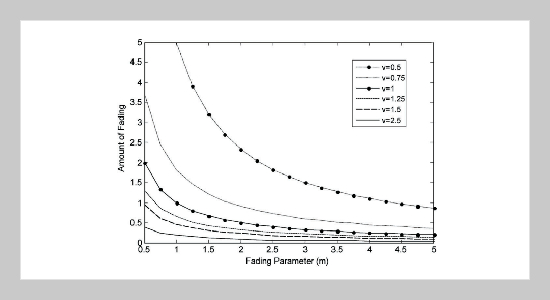REFERENCES
- [1] Reinbold, P. and Bonaventure, O., “IP Micro-Mobility Protocols,” IEEE Communications Surveys & Tutorials, Vol. 5, pp. 40�57 (2003).
- [2] Wang, N., Jiang, J. and Huang, Y., “RSVP Extensions for Real-Time Services in Heterogeneous Wireless Networks,” Computer Communications, Vol. 30, pp. 2248�2257 (2007).
- [3] Lin, C.-L., Ho, C.-H. and Pan, J.-Y., “Hand-Off Evolution with Multiple Interfaces,” IT Professional, Vol. 10, pp. 22�28 (2008).
- [4] Baroncelli, F., Martini, B., Martini, V. and Castoldi, P., “Extending Next Generation Network (NGN) Architecture for Connection-Oriented Transport,” Computer Communications (2010).
- [5] Ke, C.-H., Cheng, R.-S., Tsai, C.-D. and Tsai, M.-F., “Bandwidth Aggregation with Path Interleaving Forward Error Correction Mechanism for Delay-Sensitive Video Streaming in Wireless Multipath Environments,” Tamkang Journal of Science and Engineering, Vol. 13, pp. 1�9 (2010).
- [6] Montavont, N. and Noel, T., “Handover Management for Mobile Nodes in IPv6 Networks,” IEEE Communications Magazine, Vol. 40, pp. 38�43 (2002).
- [7] Chen, Y., Hsia, J. and Liao, Y., “Advanced Seamless Vertical Handoff Architecture for WiMAX and WiFi Heterogeneous Networks with QoS Guarantees,” Computer Communications, Vol. 32, pp. 281�293 (2009).
- [8] Liao, W. and Chen, Y., “Supporting Vertical Handover between Universal Mobile Telecommunications System and Wireless LAN for Real-time Services,” IET Communications, Vol. 2, pp. 75�81 (2008).
- [9] Zhang, D., Jiang, J., Anani, A. and Li, H., “QoS-Guaranteed Packet Scheduling in Wireless Networks,” The Journal of China Universities of Posts and Telecommunications, Vol. 16, pp. 63�67 (2009).
- [10] TalebiFard, P., Wong, T. and Leung, V. C., “Access and Service Convergence over the Mobile Internet - A Survey,” Computer Networks, Vol. 54, pp. 545�557 (2010).
- [11] Tachikawa, K., “A Perspective on the Evolution of Mobile Communications,” IEEE Communications Magazine, Vol. 41, pp. 66�73 (2003).
- [12] Berzin, O., “Hierarchical Mobility Label Based Network: System Model and Performance Analysis,” Computer Networks, Vol. 54, pp. 2357�2382 (2010).
- [13] Bongkyo, Moon and Aghvami, A., “Quality-of-Service Mechanisms in All-IP Wireless Access Networks,” IEEE Selected Areas in Communications, Vol. 22, pp. 873�888 (2004).
- [14] Chodorek, R. and Leszczuk, M., “QoE Validation of a RSVP Protocol Extension Enabling Efficient Resource Reservation for Aggregated Traffic in Heterogeneous IP Networks,” In: Quality of Multimedia Experience (QoMEX), 2010 Second International Workshop on, pp. 17�22 (2010).
- [15] Braden, R., Zhang, L., Berson, S., Herzog, S. and Jamin, S., “Resource reSerVation Protocol (RSVP) Version 1: Functional Specification,” IETF RFC 2205, (1997).
- [16] Karsten, M., “Collected Experience from Implementing RSVP,” IEEE/ACM Networking, Vol. 14, pp. 767� 778 (2006).
- [17] Chang, M., Lee, M. and Lee, H., “An RSVP Based Seamless Resource Reservation Scheme for Wireless Mobile Networks,” Computer Communications, Vol. 30, pp. 81�92 (2006).
- [18] Xia, Z.-Y. and Hu, Y.-A., “Extending RSVP for Quality of Security Service,” IEEE Internet Computing, Vol. 10, pp. 51�57 (2006).
- [19] Tang, Y.-L., Lin, C.-C., Yuan, Y. and Deng, D.-J., “Dividing Sensitive Ranges Based Mobility Prediction Algorithm in Wireless Networks,” Tamkang Journal of Science and Engineering, Vol. 13, pp. 107�115 (2010).
- [20] Anup, K. T., Badrinath, B. R. and Arup, A., “MRSVP: A Resource Reservation Protocol for An Integrated Services Network with Mobile Hosts,” Wireless Networks, Vol. 7, pp. 5�19 (2001).
- [21] Jorg, D. and Martina, Z., “A Simple and Scalable Handoff Prioritization Scheme,” Computer Communications, Vol. 28, pp. 773�789 (2005).
- [22] Hongseok, J. and Jonghwa, Y., “Performance Analysis of Mobile RSVP and Hierarchical Mobile RSVP,” In: Asia-Pacific Communications Conference 2006, pp. 1�5 (2006).
- [23] Yilin, S., Yi, S., Min, L. and Dutkiewicz, E., “Comparative Analysis of Resource Reservation Cost for Different RSVP Extension Schemes in Mobile Environments,” In: Communications and Information Technologies, pp. 1331�1336 (2007).
- [24] Belhoul, A., Sekercioglu, Y. A. and Mani, N., “Mobility-Aware RSVP: A Framework for Improving the Performance of Multimedia Services over Wireless IP-Based Mobile Networks,” Computer Communications, Vol. 32, pp. 569�582 (2009).
- [25] Fogelstroem, E., Jonsson, A., Ericsson and Perkins, C., “Mobile IPv4 Regional Registration,” IETF RFC 4857 (2007).
- [26] Tseng, C.-C., Lee, G.-C. and Liu, R.-S., “HMRSVP: A Hierarchical Mobile RSVP Protocol,” In: Distributed Computing Systems Workshop, pp. 467�472 (2001).
- [27] Lee, G.-C., Wang, T.-P. and Tseng, C.-C., “Resource Reservation with Pointer Forwarding Schemes for the Mobile RSVP,” IEEE Communications Letters, Vol. 5, pp. 298�300 (2001).
- [28] Ye, M.-H., Zhang, Y., Zhang, H.-M. and Liu, Y., “A Modified HMRSVP Scheme,” In: Vehicular Technology Conference, Vol. 4, pp. 2779�2782 (2003).
- [29] Yao, H.-J. and Kuo, G.-S., “Dynamic Point Forwarding Scheme for QoS-Aware Mobility in Future All-IP Wireless Networks,” In: IEEE Vehicular Technology Conference, pp. 1073�1077 (2006).
- [30] Wenchao, M. and Yuguang, F., “An Efficient Mobility Management Scheme Based on Location Anchoring and Pointer Forwarding,” In: IEEE Vehicular Technology Conference, Vol. 4, pp. 2764�2768 (2003).
- [31] Paskalis, S., Kaloxylos, A., Zervas, E. and Merakos, L., “An Efficient RSVP-Mobile IP Interworking scheme,” Mob. Netw. Appl., Vol. 8, pp. 197�207 (2003).
- [32] Wooseong, K. and Hongseok, J., “Advanced Resource Reservation Using PAR-SIP for Real-Time Multimedia Communication,” In: IEEE Vehicular Technology Conference, pp. 324�328 (2006).
- [33] Gao, X., Wu, G. and Miki, T., “End-to-End QoS Provisioning in Mobile Heterogeneous Networks,” IEEE Wireless Communications, Vol. 11, pp. 24�34 (2004).
- [34] Bejerano, Y., Smith, A., Naor, J. and Immorlica, N., “Efficient Location Area Planning for Personal Communication Systems,” IEEE Networking, Vol. 14, pp. 438�450 (2006).
- [35] Wang, J.-T., Yang, J.-S. and Tseng, C.-C., “An Intelligent Agent-Based Mobile Resource Reservation Scheme,” In: Parallel and Distributed Systems, Vol. 1, pp. 737�742 (2005).
- [36] Elleingand, S. and Pierre, S., “FH-RSVP Scheme for Intra-Site Handover in Hierarchical Mobile IPv6 Networks,” Computer Communications, Vol. 30, pp. 416� 427 (2007).
















